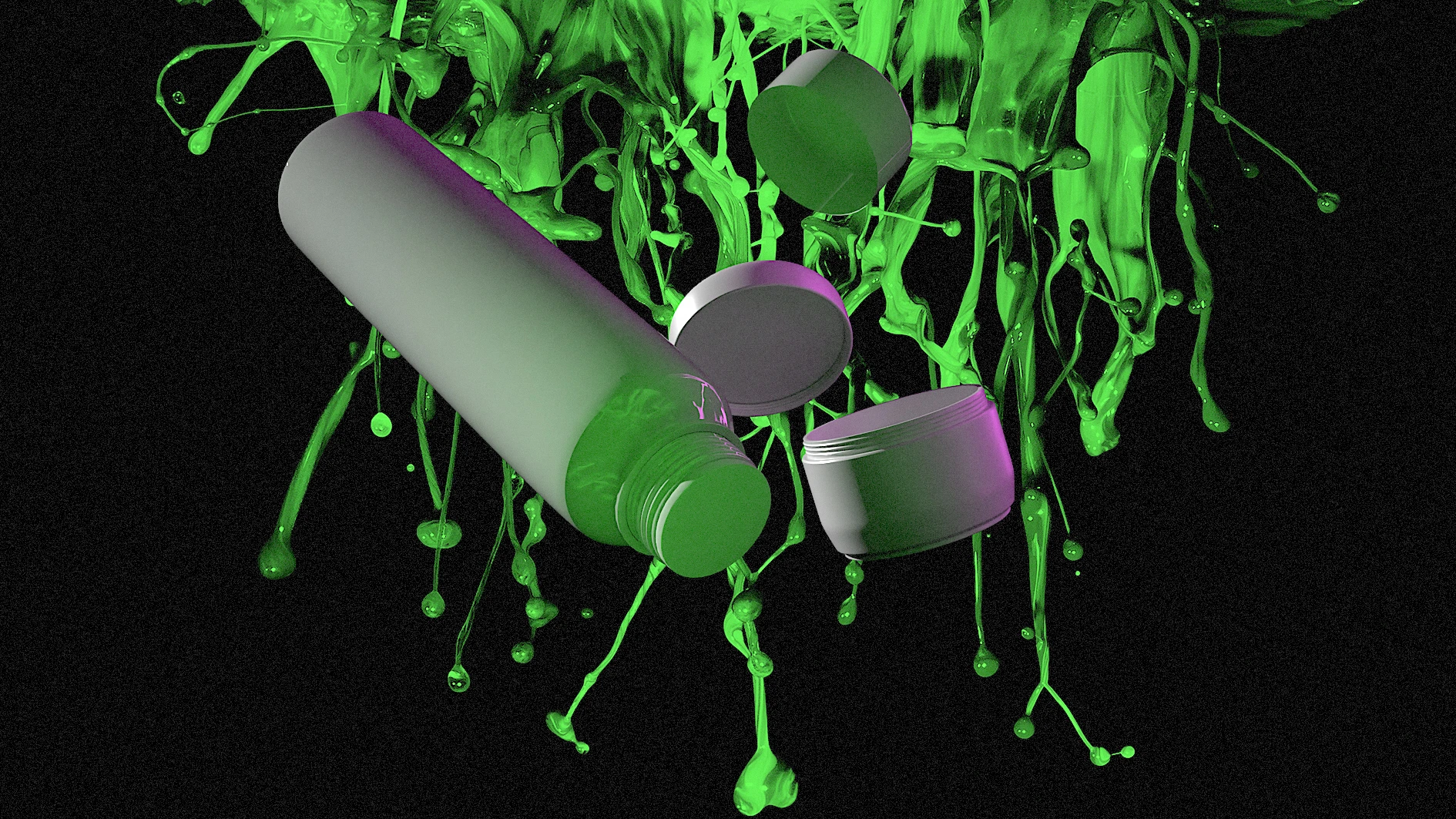If you’ve been paying attention to the news, you’re probably already aware that plastic is a scourge on the planet. It clogs up our landfills for hundreds of years and ends up in the ocean, where sea animals mistake it for food. But if you needed another reason to rethink how much plastic you’re bringing into your life, a new report from Norwegian scientists finds that many of the plastic products we use every day are full of harmful toxins. The researchers studied plastics in commonly used products, from yogurt cups to bath sponges, and found that three quarters of them contained toxic chemicals.
“The problem is that plastics are made of a complex chemical cocktail, so we often don’t know exactly what substances are in the products we use,” Martin Wagner, a biologist at the Norwegian University of Science and Technology and a co-author of the report published in Environmental Science and Technology, said in a statement. “For most of the thousands of chemicals, we have no way to tell whether they are safe or not. And manufacturers may or may not know the ingredients of their products, but even if they know, they are not required to disclose this information.”
There are more than 5,000 different types of plastic, which are used to make everything from outdoor furniture to toys to candy wrappers. And to make matters more complicated, there are thousands of chemicals that are used to make these plastics. For instance, in food packaging alone, researchers estimate that there are about 4,000 different chemicals used. This makes it hard to study plastics comprehensively and isolate the chemical that might be harmful.

Here’s another scary thing: Researchers could not pinpoint which chemicals were the culprits. In fact, they had a hard time even identifying what chemicals were in the plastics. They observed more than 1,400 substances, but could only identify 260 of them. But the toxins were widespread. Take something as basic as a plastic yogurt container. The team studied four different kinds, and found toxicity in two of them.
When plastic was first invented, it was largely made from petroleum and other fossil fuels. Since then, there has been a movement to create plastic from renewable resources like plants. However, these bioplastics have the same chemical structure as any other plastic. And the risks are the same. “Regarding toxicity, it’s the same problem,” Wagner said in the statement. “We are in the dark as to which chemicals are used in the bioplastics as well.”
Plastic is ubiquitous. But the authors have three suggestions about how you can protect yourself. Unsurprisingly, they recommend simply trying to cut down on your plastic footprint. There’s a good chance you’re already working to decrease your dependence on plastic, given its environmental impact. This just provides more justification. In practical terms, it could mean buying fresh food or unpackaged products, or using products made of alternate materials like glass or wood when possible.
Second, the researchers found that polyvinyl chloride (PVC) and polyurethane (PUR) tended to be consistently high in toxins. So, you should avoid these plastics. PVC is particularly common in everyday products, from plastic wrap to industrial pipes, and is marked by the #3 recycling code.
But ridding yourself of plastic can be very hard. So as a final step, the researchers encourage consumers to lobby for safer products. One way to do this is to demand that retailers and manufacturers be transparent about what materials their products are made of. And even though it was hard for the researchers to pinpoint what chemicals were toxic, it was clear to them that some forms of plastic were worse than others. At the very least, consumers could drive companies to move away from plastics known to cause the greatest harm.
We should also be lobbying lawmakers to better regulate the industry to rid the market of plastics known to cause harm. There’s some evidence that this kind of effort can work. In 2012, the Food and Drug Administration banned BPA (or bisphenol A) in kids’ products like baby bottles and cups. The chemical, which could leach into food, was known to mimic estrogen, and had negative effects on the brain, behavior, and on prostate glands of fetuses, infants, and children. The government put this into effect after consumers and public health advocates spoke up about the dangers of the chemical.
But perhaps we need to think more radically about the plastic problem. The material is relatively new. It only became widespread in the 1960s, but quickly wormed its way into every aspect of our lives. Given what we now know about how plastic can harm humans and the planet, it might be time to start phasing it out. And this gives scientists and designers an opportunity to invent new materials to replace it with.
We’re already seeing this happen. Elissa Brunato designed sequins from compostable cellulose. Charlotte McCurdy designed a trendy translucent raincoat from biodegradable and carbon-neutral algae. With some creativity, a plastic-free future could be just as shiny and fashion-forward as the world we live in now.
Recognize your brand’s excellence by applying to this year’s Brands That Matter Awards before the early-rate deadline, May 3.
